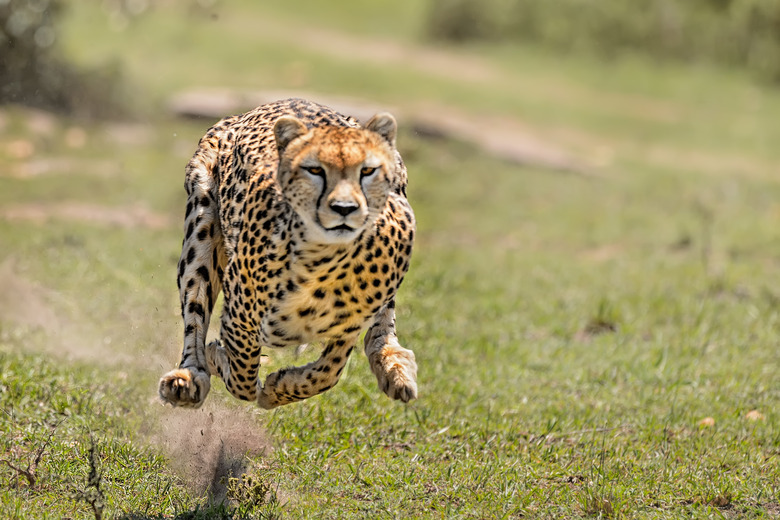What Kind Of Environment Does A Cheetah Live In?
Cheetahs require a specific habitat that allow them to safely reproduce, hide, hunt, and seek shade to regulate body temperatures in hot climates and during warm seasons. Since cheetahs require a specific habitat to thrive in and cannot be as easily relocated as animals that can adjust to a variety of habitats, they often clash with humans and have become endangered in many areas.
Continental Habitat
Continental Habitat
Cheetah populations can be found in East Africa, especially in national parks such as Masai Mara or the Serengeti. However, cheetahs inhabit several nations and continents, including Iran and certain parts of southwestern Asia. Namibia, a country located in southwestern Africa, hosts the world's largest cheetah population.
Vegetation
Vegetation
Cheetahs primarily occupy areas without dense vegetation. These habitats include deserts, plains or grasslands. Cheetahs also tend to thrive in savannas and scrubland. Cheetahs can be found in any wide-open habitat where they can find and hunt prey. Open land without dense vegetation is advantageous to the cheetah because these big cats rely on speed for successful hunting. The cheetah's speed would be irrelevant in a densely wooded area where dexterity and climbing ability is required to snare a meal. Cheetahs also avoid wetlands where swampy ground would inhibit their speed. Cheetahs will inhabit areas where the ground is covered in thick brush, however, since this type of vegetation provides hiding places but does not prevent swift running.
Lairs
Lairs
Cheetahs require a habitat that allows them to take refuge in a protective lair. Lairs are an essential part of the habitat of mother cheetahs, which require a safe place to give birth and raise cubs. Cheetahs often select marshes, gullies, and areas with dense vegetation as a site to establish lairs. It is important that a lair is near water, since mothers who are pregnant or nursing young drink frequently. Cheetahs often establish new lairs if they feel that a previous habit was not satisfactory or was discovered by predators such as lions.
Elevation and Climate
Elevation and Climate
Cheetahs prefer a habitat with a dry climate, since low humidity and rainfall often correspond with a low level of vegetation. Similarly cheetahs tend to live at altitudes above sea level and sometimes occupy sparsely vegetated mountains. Desert vegetation gives cheetahs adequate protection in seeking lairs and shade without providing prey with hiding places or preventing cheetahs from reaching their maximum running speeds.
References
Cite This Article
MLA
, Emma Rensch. "What Kind Of Environment Does A Cheetah Live In?" sciencing.com, https://www.sciencing.com/kind-environment-cheetah-live-8604570/. 13 March 2018.
APA
, Emma Rensch. (2018, March 13). What Kind Of Environment Does A Cheetah Live In?. sciencing.com. Retrieved from https://www.sciencing.com/kind-environment-cheetah-live-8604570/
Chicago
, Emma Rensch. What Kind Of Environment Does A Cheetah Live In? last modified August 30, 2022. https://www.sciencing.com/kind-environment-cheetah-live-8604570/
